Abstract
Defensive chemicals used by organisms for protection against potential consumers are generally products of secondary metabolism. Such chemicals are characteristic of free-living organisms with a limited range of movement or limited control over their movements. Despite the fact that chemical defense is widespread among animals as well as plants, the vast majority of theories advanced to account for patterns of allocation of energy and materials to defensive chemistry derive exclusively from studies of plant-herbivore interactions. Many such theories place an undue emphasis on primary physiological processes that are unique to plants (e.g., photosynthesis), rendering such theories limited in their utility or predictive power. The general failure of any single all-encompassing theory to gain acceptance to date may indicate that such a theory might not be a biologically realistic expectation. In lieu of refining theory, focusing attention on the genetic and biochemical mechanisms that underlie chemical defense allocation is likely to provide greater insights into understanding patterns across taxa. In particular, generalizations derived from understanding such mechanisms in natural systems have immediate applications in altering patterns of human use of natural and synthetic chemicals for pest control.
Full text
PDF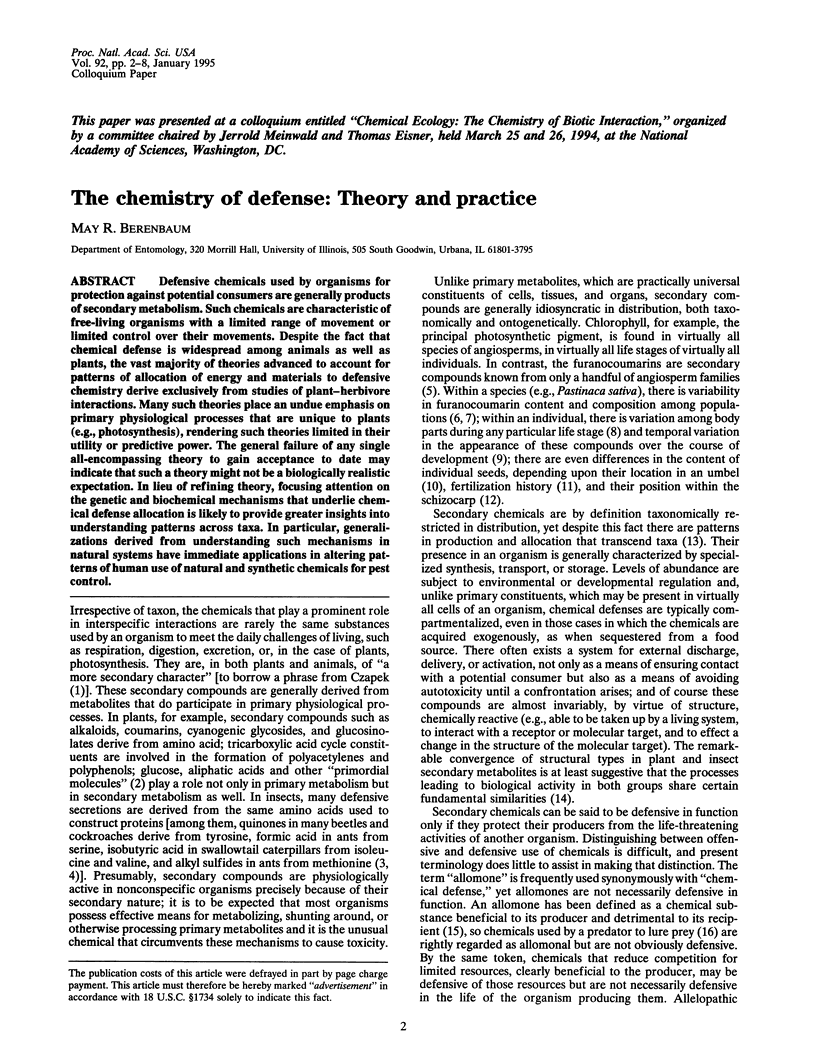
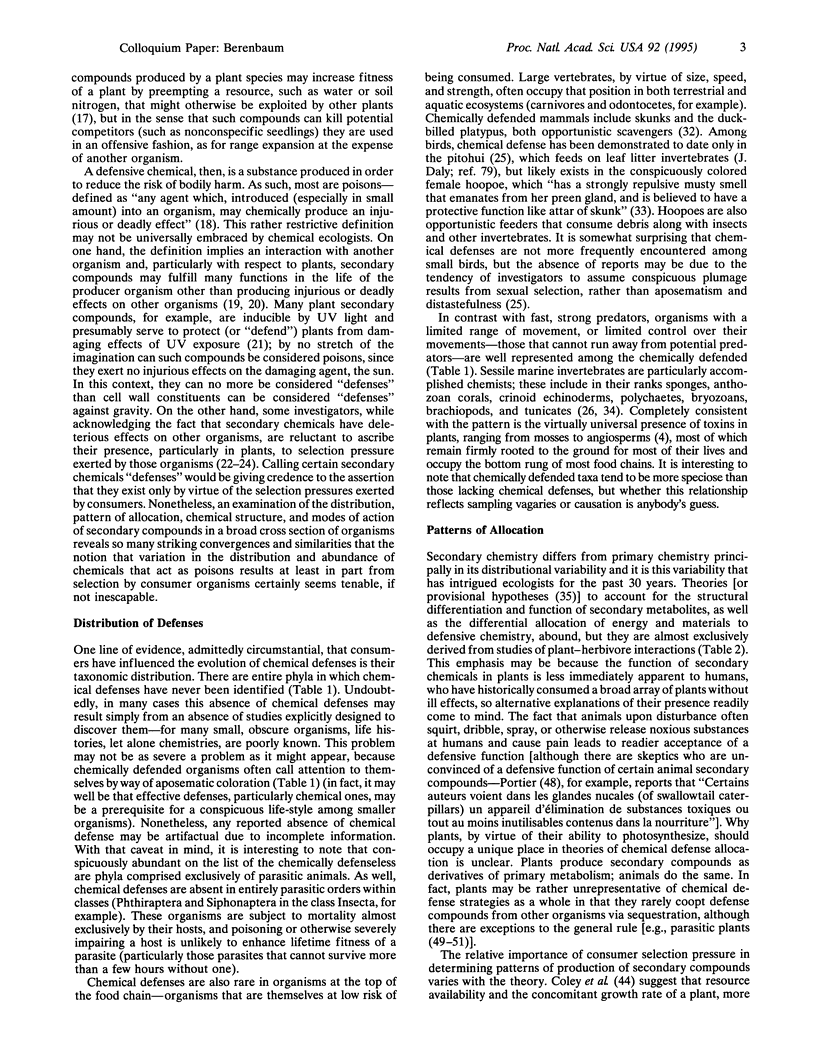
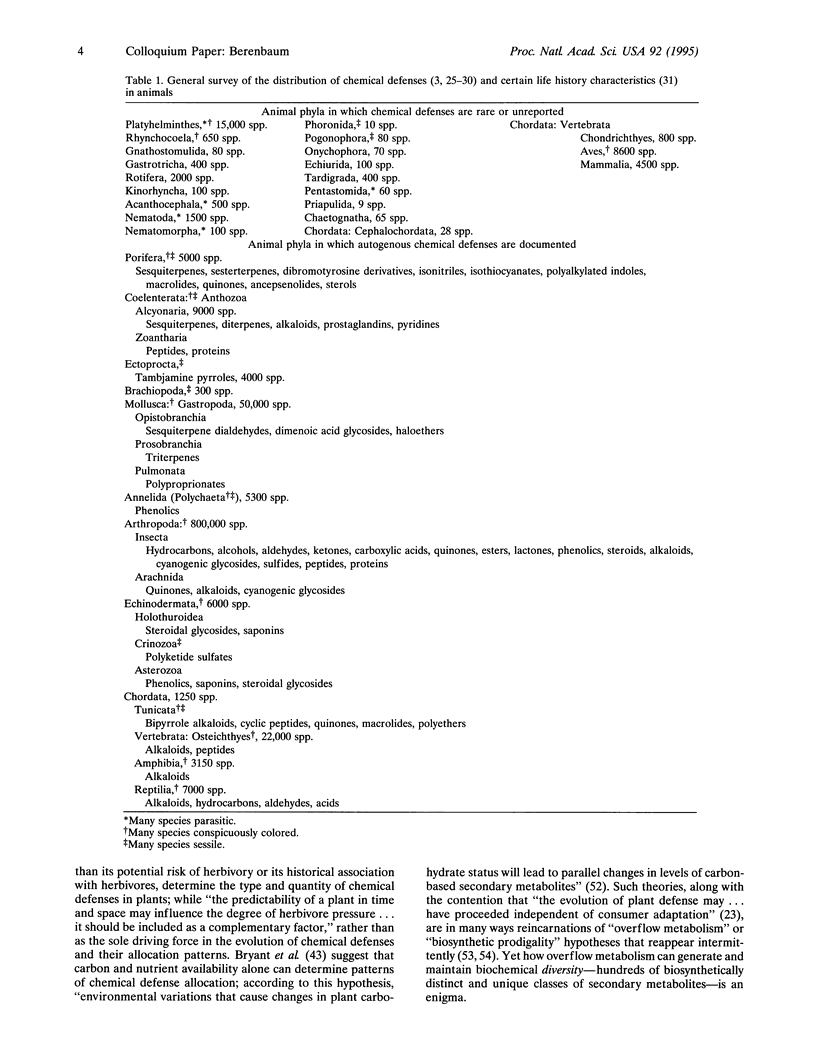
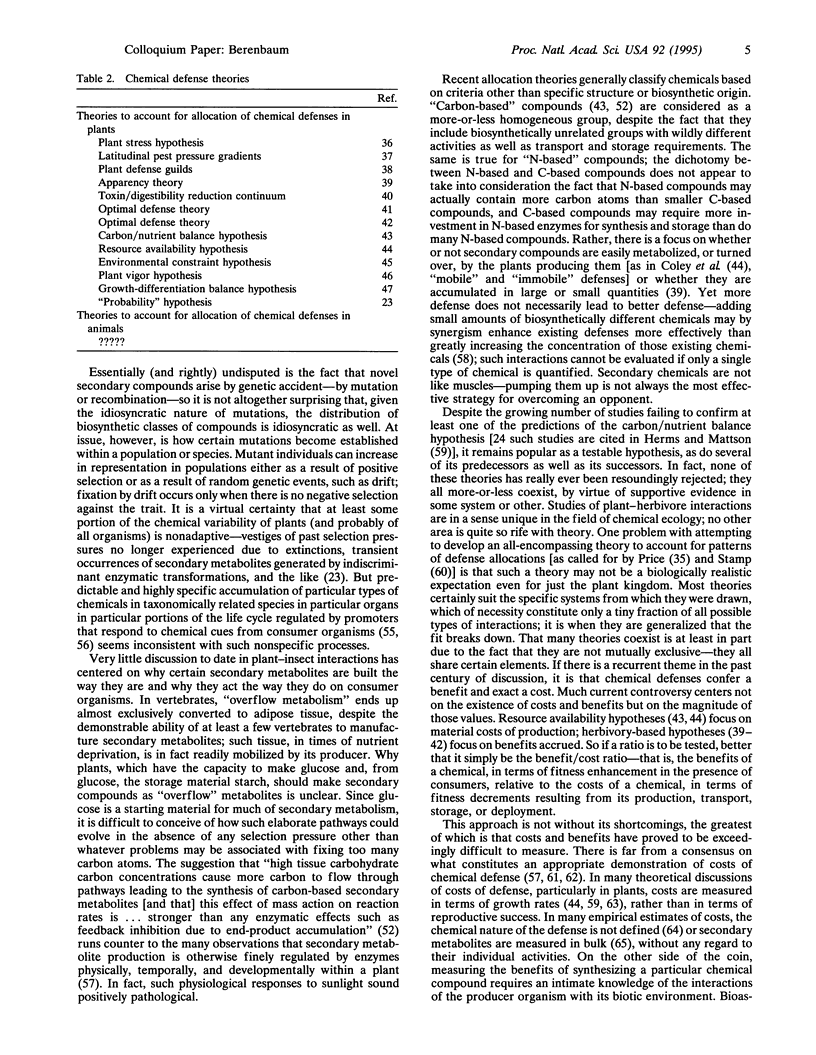
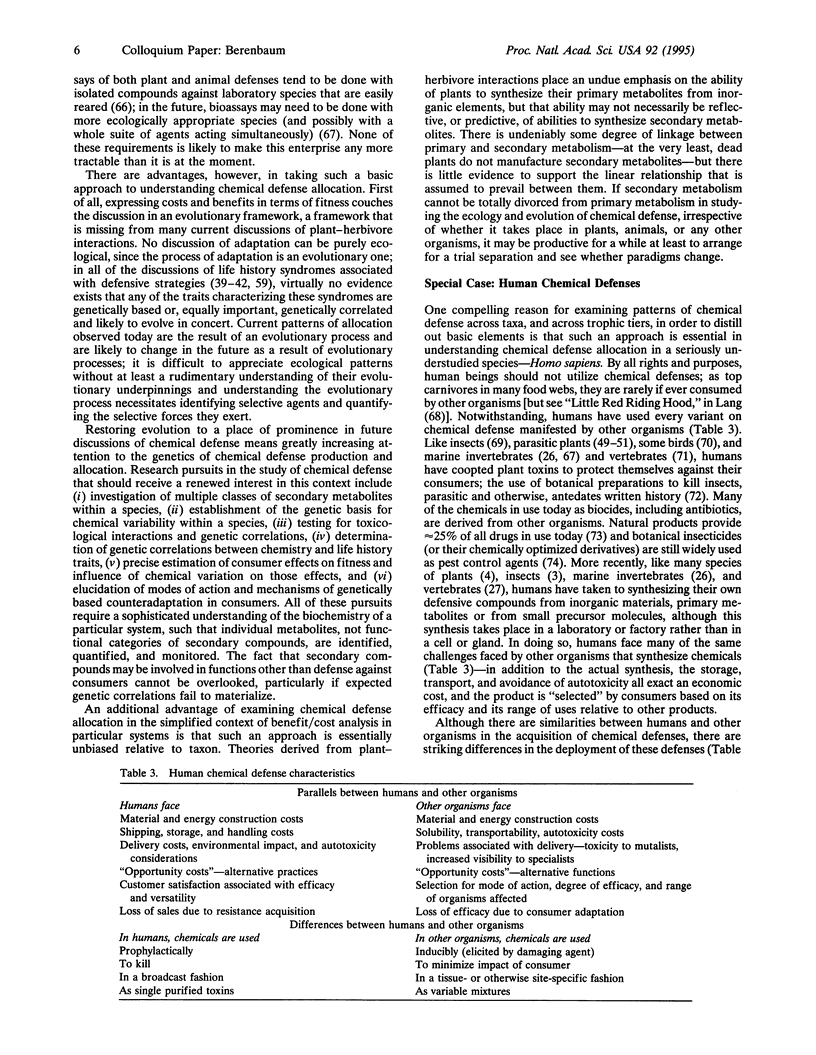
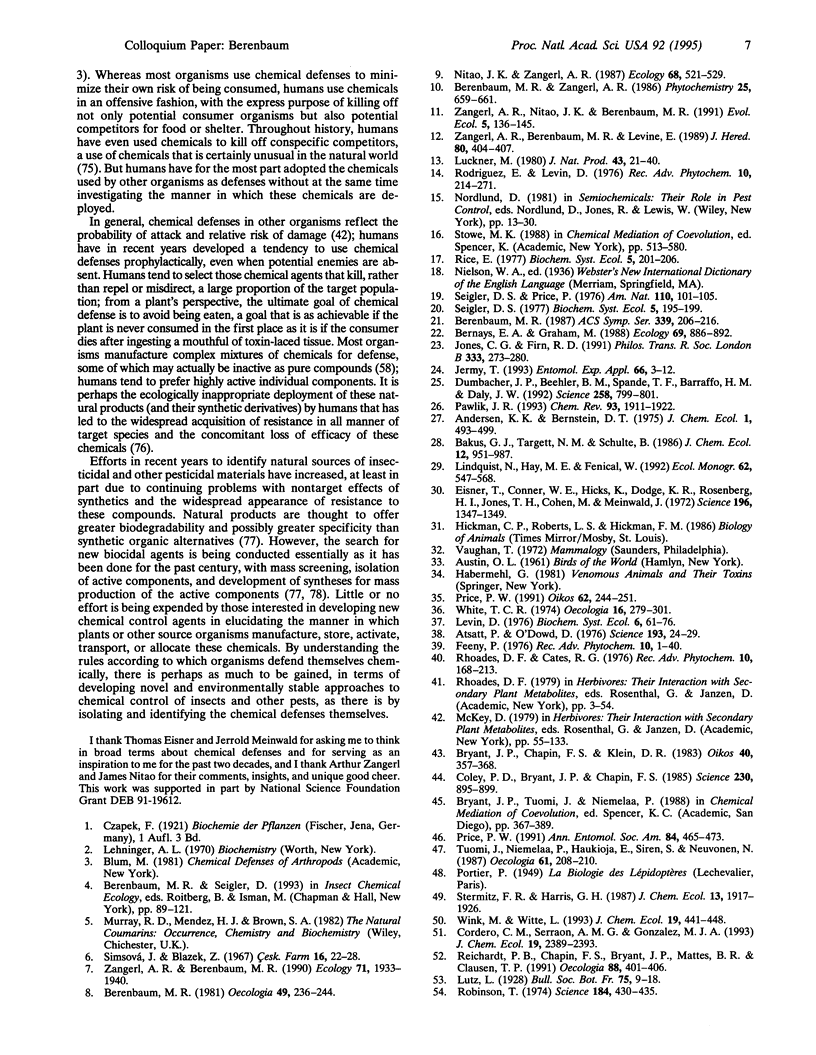
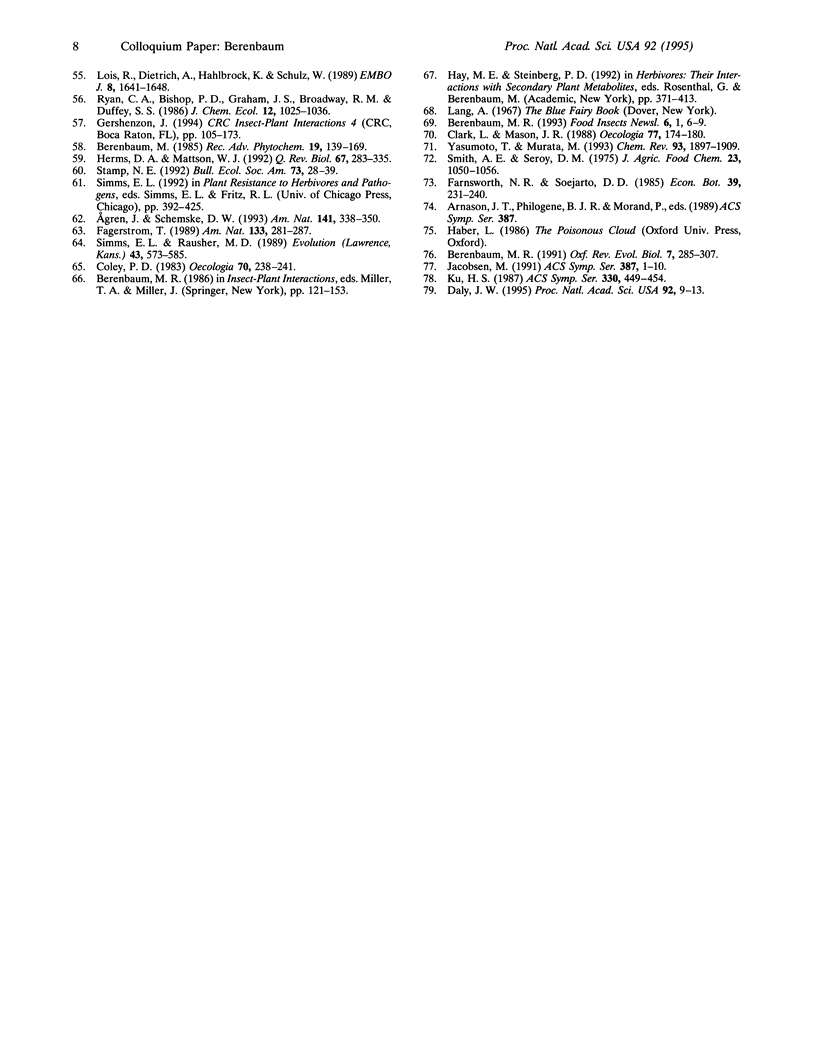
Selected References
These references are in PubMed. This may not be the complete list of references from this article.
- Atsatt P. R., O'dowd D. J. Plant defense guilds. Science. 1976 Jul 2;193(4247):24–29. doi: 10.1126/science.193.4247.24. [DOI] [PubMed] [Google Scholar]
- Coley P. D., Bryant J. P., Chapin F. S., 3rd Resource availability and plant antiherbivore defense. Science. 1985 Nov 22;230(4728):895–899. doi: 10.1126/science.230.4728.895. [DOI] [PubMed] [Google Scholar]
- Daly J. W. The chemistry of poisons in amphibian skin. Proc Natl Acad Sci U S A. 1995 Jan 3;92(1):9–13. doi: 10.1073/pnas.92.1.9. [DOI] [PMC free article] [PubMed] [Google Scholar]
- Dumbacher J. P., Beehler B. M., Spande T. F., Garraffo H. M., Daly J. W. Homobatrachotoxin in the genus Pitohui: chemical defense in birds? Science. 1992 Oct 30;258(5083):799–801. doi: 10.1126/science.1439786. [DOI] [PubMed] [Google Scholar]
- Eisner T., Conner W. E., Hicks K., Dodge K. R., Rosenberg H. I., Jones T. H., Cohen M., Meinwald J. Stink of Stinkpot Turtle Identified: ohgr-Phenylalkanoic Acids. Science. 1977 Jun 17;196(4296):1347–1349. doi: 10.1126/science.196.4296.1347. [DOI] [PubMed] [Google Scholar]
- Lois R., Dietrich A., Hahlbrock K., Schulz W. A phenylalanine ammonia-lyase gene from parsley: structure, regulation and identification of elicitor and light responsive cis-acting elements. EMBO J. 1989 Jun;8(6):1641–1648. doi: 10.1002/j.1460-2075.1989.tb03554.x. [DOI] [PMC free article] [PubMed] [Google Scholar]
- Robinson T. Metabolism and function of alkaloids in plants. Science. 1974 Apr 26;184(4135):430–435. doi: 10.1126/science.184.4135.430. [DOI] [PubMed] [Google Scholar]
- Simsová J., Blazek Z. Zmeny obsahu furokumarinů u Pastinaca sativa L. subsp. eusativa Briq. behem vegetace. Cesk Farm. 1967 Jan;16(1):22–28. [PubMed] [Google Scholar]
- Smith A. E., Secoy D. M. Forerunners of pesticides in classical Greece and Rome. J Agric Food Chem. 1975 Nov-Dec;23(6):1050–1055. doi: 10.1021/jf60202a004. [DOI] [PubMed] [Google Scholar]


